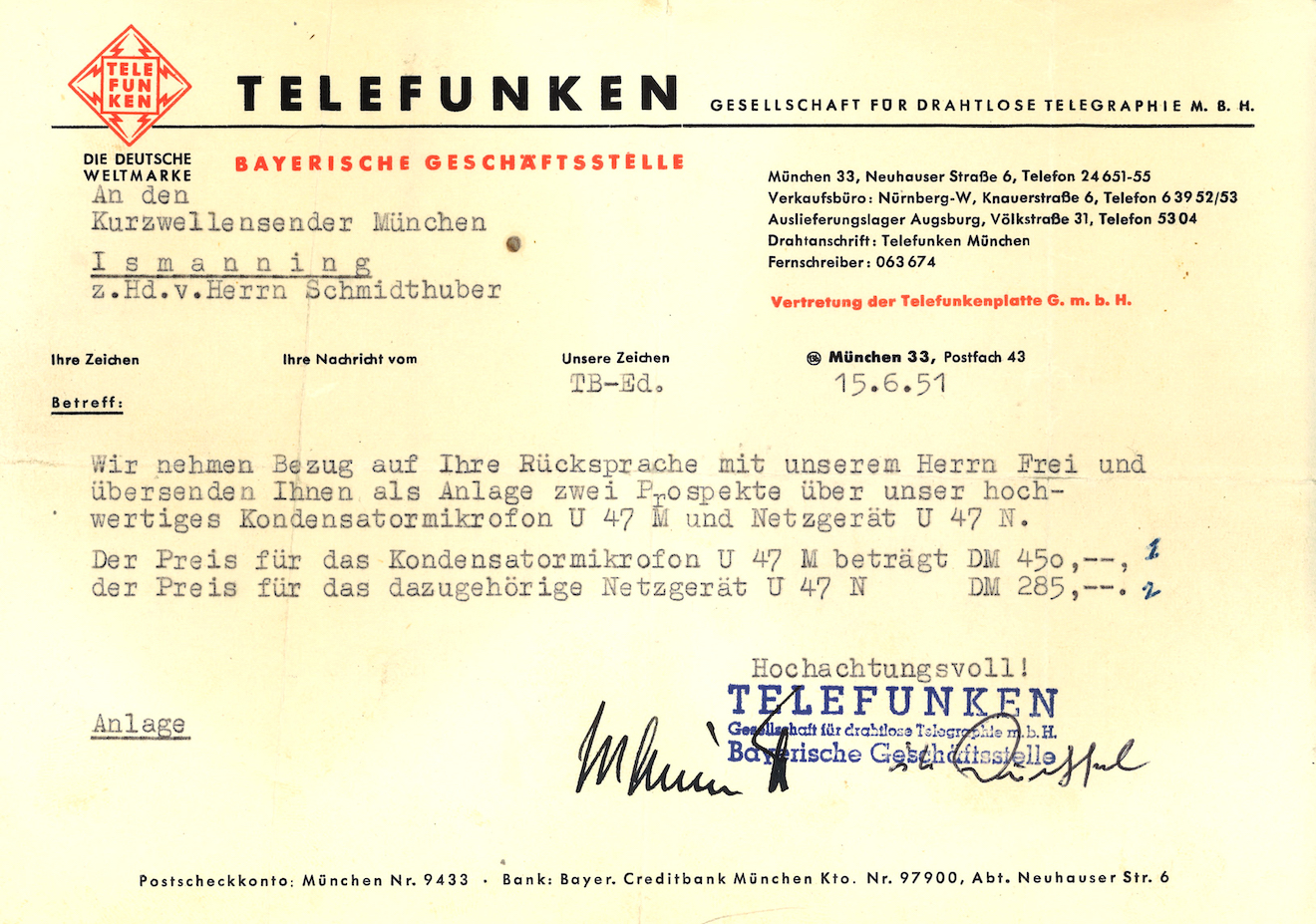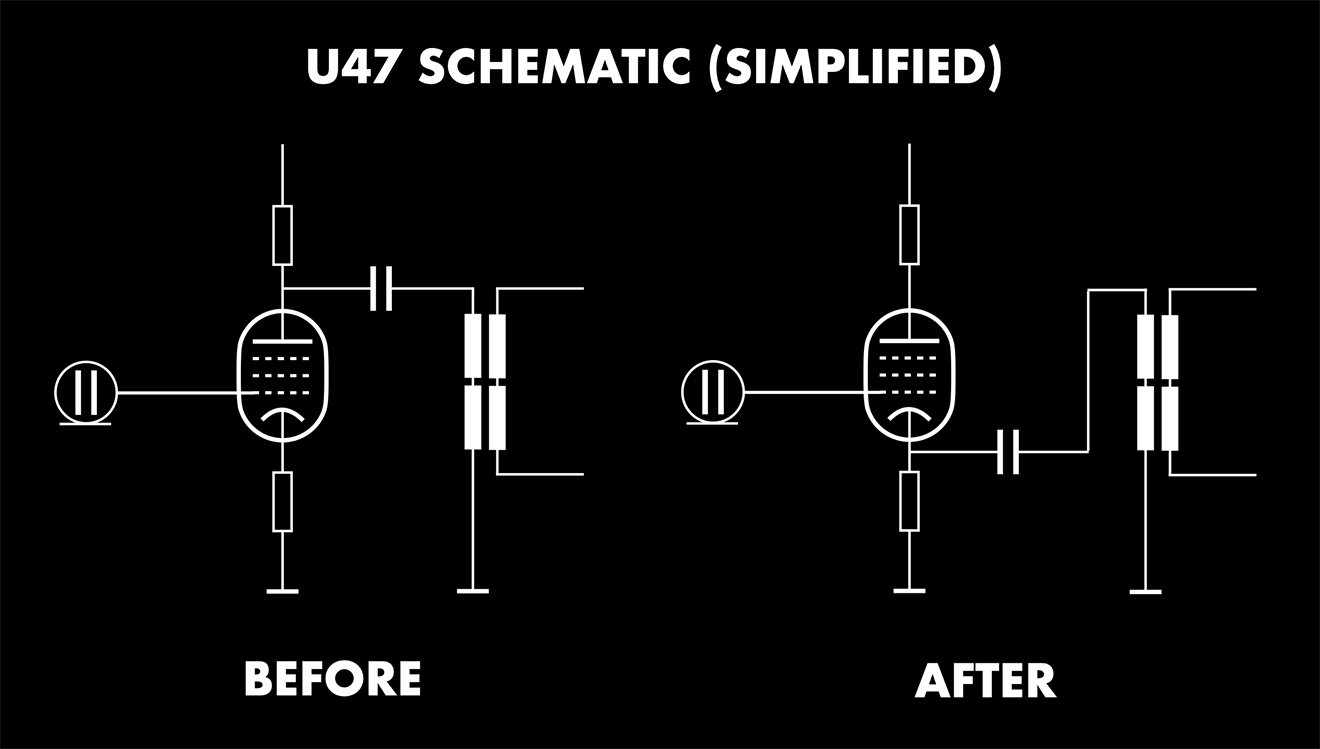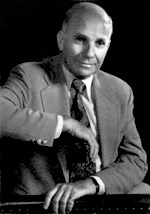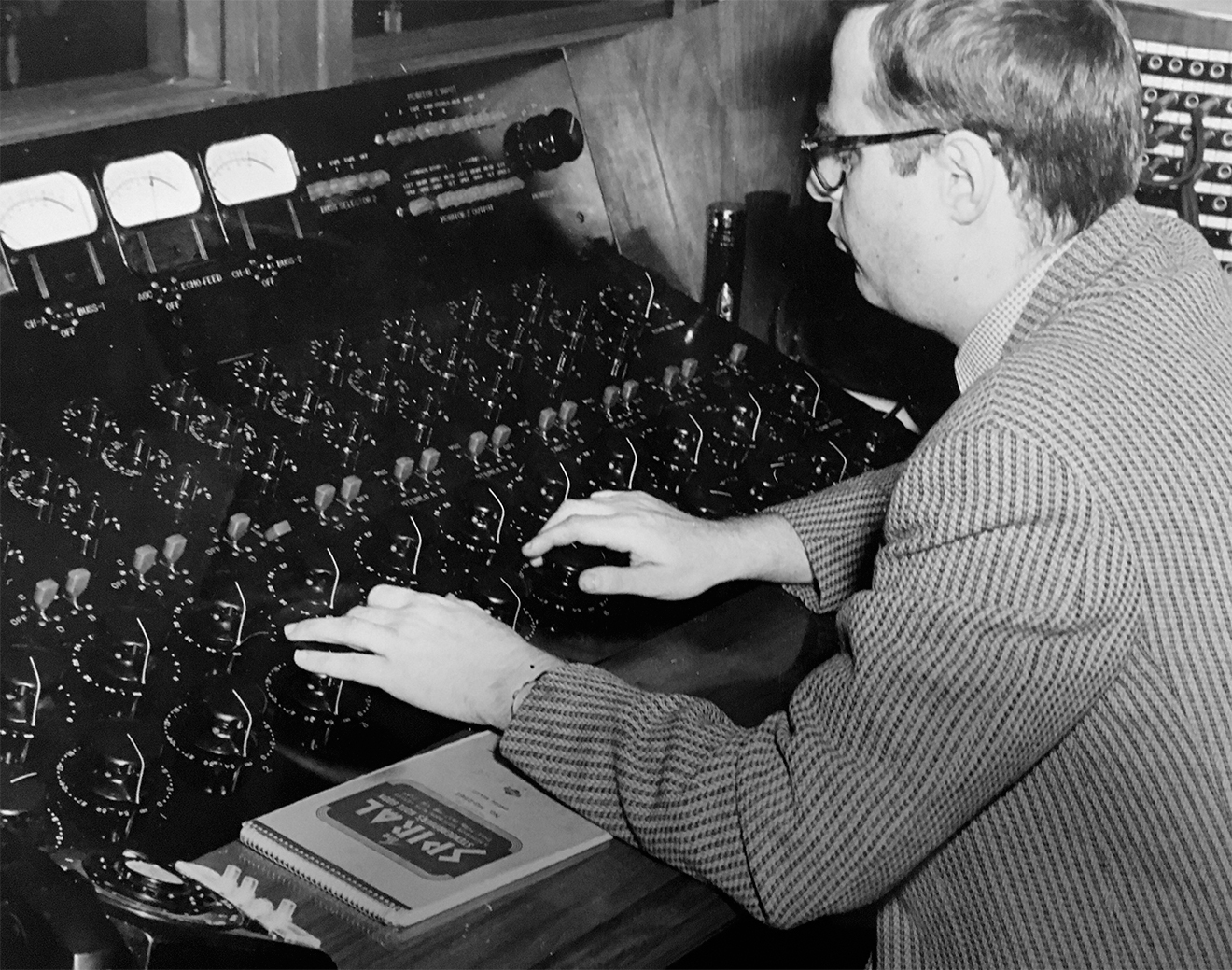Written by Tommaso Gambini
Edited by Kevin Gray and Richard Capeless
The Neumann U47, distributed internationally by Telefunken, first appeared in Germany in 1948 (Schwartau & Smith, 1980), and made an early appearance in the United States around 1951 when New York City recording studio Reeves began using one. Reeves’ U47 sparked the interest of audio professionals to the point of making it to the cover of the October 1951 issue of Audio Engineering magazine.
Rudy Van Gelder had visited Reeves and instantly took an interest in the U47 (Zand, 2004). With the help of an acquaintance who worked for Armed Forces Radio near Munich, Van Gelder imported himself a U47 shortly after, effectively becoming the second* recording engineer in the New York area to own one (Zand, 2004). The U47 was extremely expensive, costing significantly more than other microphones available at the time.
*It’s possible that Capitol Studios in New York had the U47 before Van Gelder and perhaps even before Reeves, but hard evidence of this is yet to surface.
(Source: The Van Gelder Estate)
Although he recognized the “extreme warmth and sensitivity” of his new microphone (Myers, 2012), Van Gelder remarked that initially the U47 was almost unusable for his purposes (Zand, 2004). The majority of microphones in use at recording studios in the early 1950s were dynamic and ribbon microphones made by RCA, Western Electric, and Electro Voice. Van Gelder himself owned dynamics and ribbons exclusively up until that point, starting out with PA mics and slowly acquiring professional models like the Altec 639 “Birdcage” and the RCA 44.
The preamplifiers inside the mixing consoles in common use were designed with low output dynamic and ribbon microphones in mind, often needing a gain of 50 or 60 dB to be raised to the nominal line level. The U47 devised a different technology, and had active electronics built into the microphone body. As a result, it developed a higher output level, especially when close-miking instruments (more and more becoming common practice at the time). When running the U47 directly into those high-gain preamps, the input transformer and the first amplification stage would be overloaded, causing unpleasant distortion.
The loading of the microphone was also critical. While the amplifier inside the U47 body was designed to work into a bridging load of 1-2k with output impedance selectable between 50 and 200 ohms (again, common practice today), older high-gain preamps had various input transformer configurations that loaded down the microphones significantly (Joel, 2002; Jenrick, 2005).
Having started a relationship with Gotham Audio, the main pro audio dealer in New York City at the time, Van Gelder turned to Gotham technician Rein Narma in 1954 to help him solve these issues.
Narma recalls modifying the U47 from its standard configuration of a simple class A plate loaded design (gain factor of approximately 25) to cathode loaded (unity gain), solving the issue of the excessive output level (Joel, 2002; Jenrick, 2005).
Ultimately, Van Gelder was not happy with the cathode follower modification, as he felt that it somehow changed the sonic character of the microphone (Zand, 2004). The Neumann engineers who designed the U47 to begin with were not too happy to learn of this modification either. Austrian-born Steve Temmer, head of Gotham, traveled to Germany in 1957 and met the engineering team at Neumann, who suggested an alternative solution consisting of a resistive pad. Van Gelder then had his U47s reversed to stock and had attenuator pads built into the power supplies instead (some of which are still in place over 60 years later). Meanwhile, Gotham had become Neumann’s exclusive distributor, so from then on all Neumann microphones imported into the United States had attenuators built into the power supplies as well (Schwartau & Smith, 1980).
Increasingly unhappy with his Altec 230B mixing console, Van Gelder once again turned to Rein Narma for help. Narma had proved himself time and time again, designing and implementing the Gotham cutting system first, and designing and building for Van Gelder the Fairchild 660 compressor (Joel, 2002).
Inspired by his brief visit to the Columbia 30th Street Studio (Sickler et al., 2011), which had a state of the art console with extensive routing capabilities, Van Gelder and Narma agreed on a custom console with features that rivaled those of commercial studios. Delivered to Van Gelder in January 1957 (Robertson, 1957), the console had ten channels, each with a three-band equalizer and an echo send, stereo echo return, and left-center-right assignment. The modules used were 20 dB gain blocks, optimized for use with the Neumann microphones that Van Gelder used so extensively. It also had a patch bay on the right and a built-in compressor on the left.
After finishing Van Gelder’s console, Narma was commissioned to build similar consoles for Olmstead Studio, his own Gotham Audio, and the inventive musician and engineer Les Paul (Skea, 2002), whose console is on display in the Mahwah Museum in New Jersey today.
List of sources for this website can be found by clicking here.






